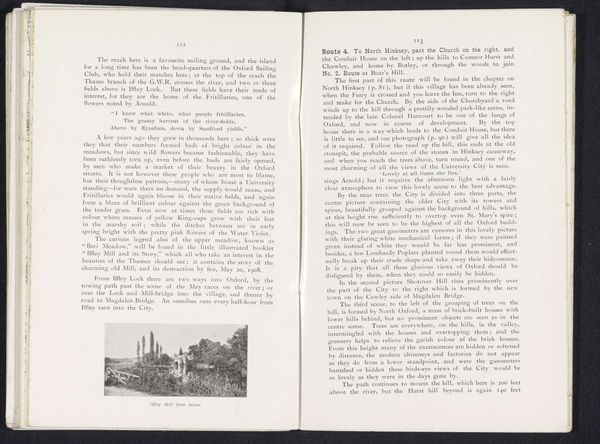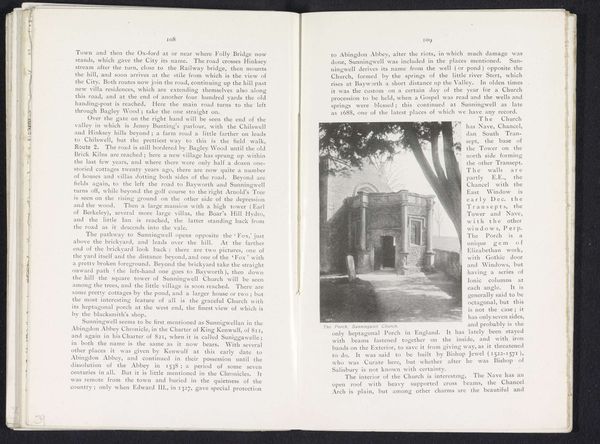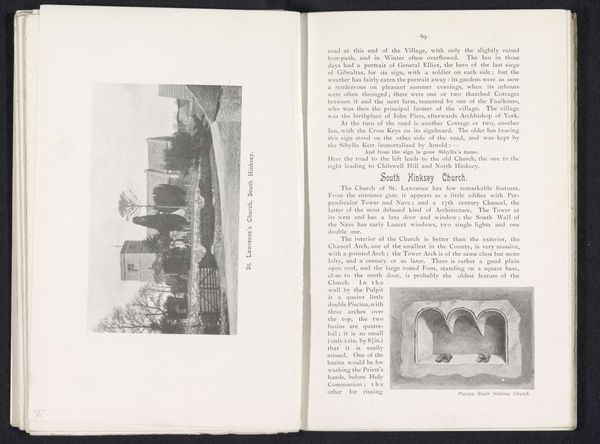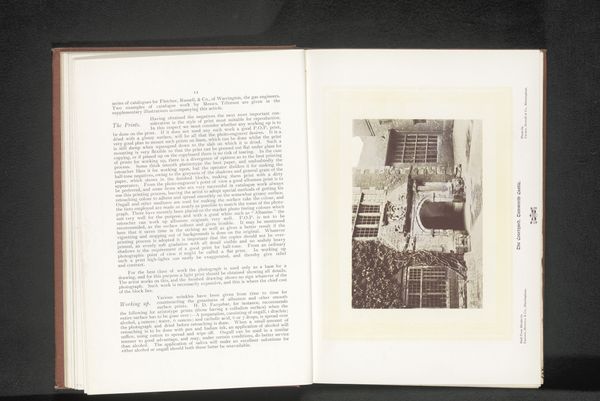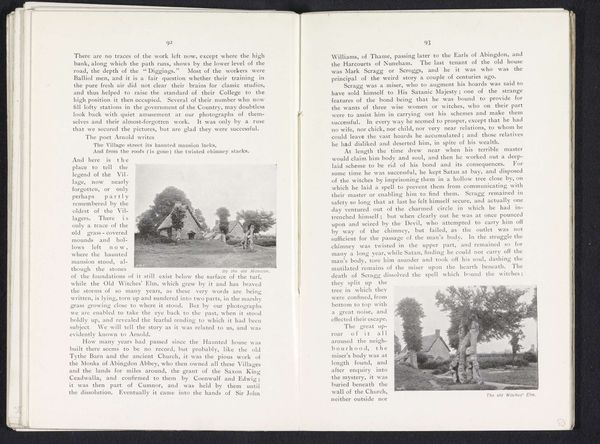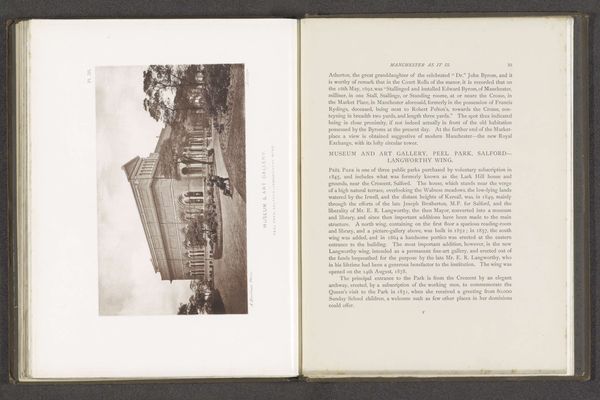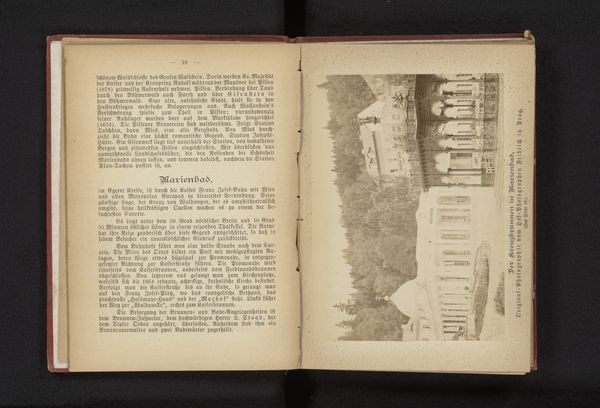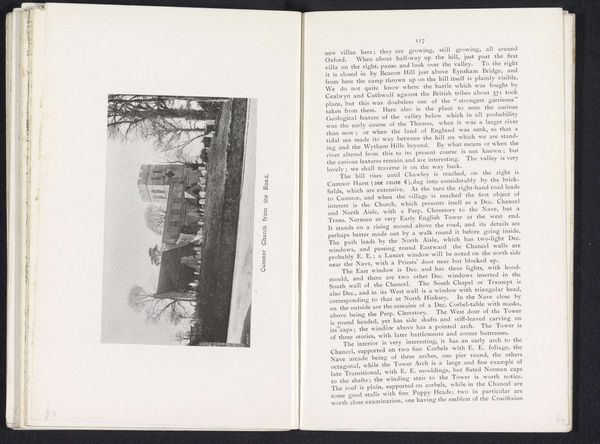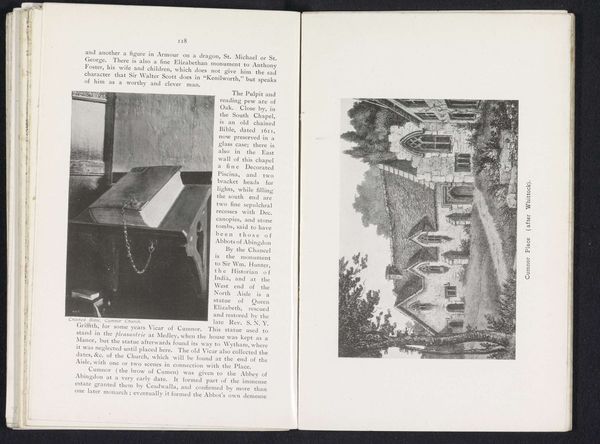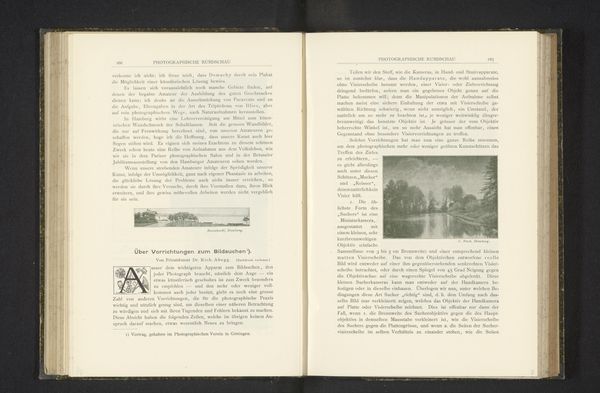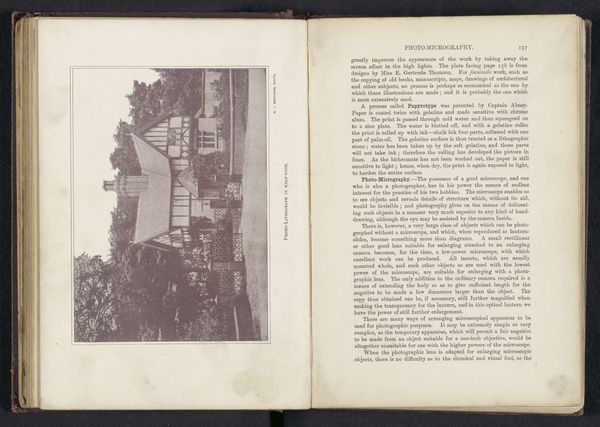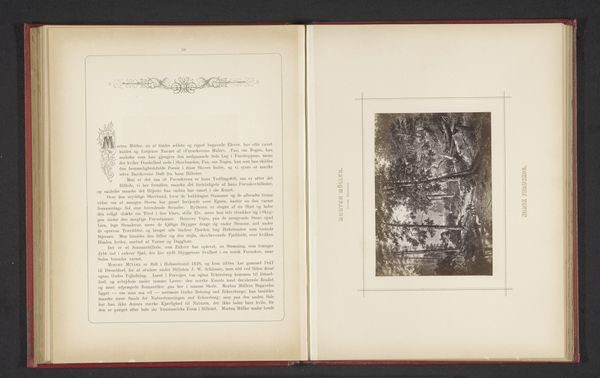
print, photography
# print
#
landscape
#
photography
#
building
Dimensions: height 80 mm, width 132 mm
Copyright: Rijks Museum: Open Domain
Editor: So, here we have "The 'Greyhound', Besselsleigh," a photographic print by Henry W. Taunt, dated before 1912. It's essentially a picture of a building, draped in what looks like ivy, maybe a pub, set in the countryside. What strikes me is the old-worldliness; it feels like looking back in time. What do you see in it? Curator: What do I see? A faded echo of simpler times, perhaps! I feel that, too, that pull to a past where the Greyhound Inn was, as the accompanying text tells us, a "capital little inn… quiet and fairly furnished with most things wanted." That description alone paints a rather complete picture. Taunt, with his camera, wasn't just recording a building; he was preserving a fragment of social history, a place for respite along a country road. Do you feel any of that in the image itself? Editor: Definitely the "respite" aspect comes across. It looks peaceful. It makes me wonder about the people who frequented it. Curator: Exactly! You get that inn-between space where stories are shared and forgotten. The print medium itself adds to the sense of distance, don’t you think? It's not a slick digital image; it’s got texture and age. Look closely – can you almost smell the beer and hear the quiet murmur of conversation? Taunt created a time capsule. Editor: I hadn't thought about it as a "time capsule" before, but that's a good way to put it. The landscape style focuses on what are ordinary elements that make for the extraordinary image, it seems. Curator: Right. And even a simple building photographed well is also a portrait of place, people, and customs now mostly gone. Which reminds me, did that place have an open fire? A good story from a landlord? Some images speak beyond art, offering social narratives. This old ‘Greyhound’ wags its ghostly tail.
Comments
No comments
Be the first to comment and join the conversation on the ultimate creative platform.


